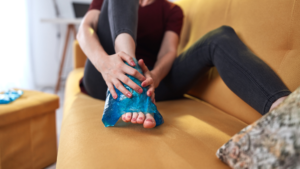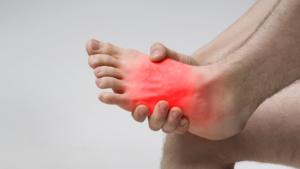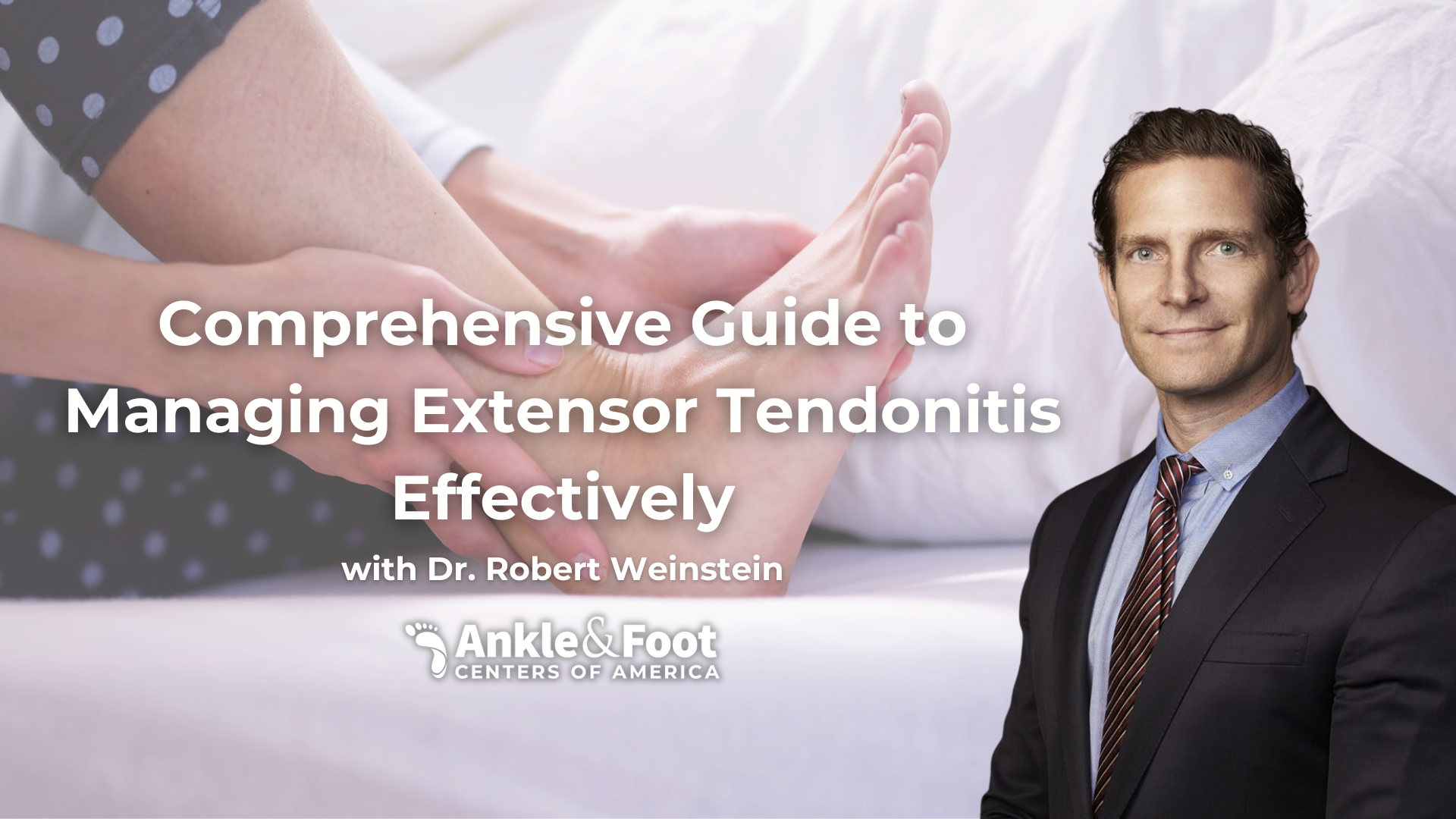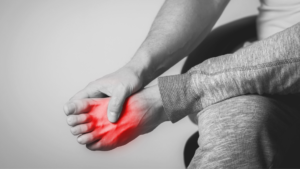Table of Contents
Introduction
Extensor Tendonitis is a common condition that affects many people, particularly those who engage in repetitive hand or foot movements. This condition occurs when the extensor tendons, which are responsible for straightening the fingers, thumb, and wrist, become inflamed. The inflammation can cause pain, swelling, and difficulty in movement, significantly impacting a person’s daily life and activities.
Understanding Extensor Tendonitis is crucial, not only for those who are directly affected by it but also for those who wish to prevent it. This condition can occur in anyone, regardless of age or fitness level, making it a widespread concern. Furthermore, it’s important to note that Extensor Tendonitis is not just a sports injury. It can also be caused by everyday activities that put strain on the extensor tendons, such as typing or playing a musical instrument.
By gaining a deeper understanding of Extensor Tendonitis, readers will be better equipped to recognize the signs and symptoms, seek timely medical attention, and take proactive steps to prevent its onset. Whether you’re a patient seeking information, a caregiver providing support, or an individual interested in health and wellness, this article aims to provide valuable insights into Extensor Tendonitis.
Understanding Extensor Tendonitis
What is Extensor Tendonitis?
Extensor Tendonitis is a medical condition characterized by the inflammation of the extensor tendons. These tendons are located on the back of the hand and the top of the foot, and they play a crucial role in the movement of the fingers, thumb, and wrist. When these tendons become inflamed, it leads to pain, swelling, and difficulty in movement, a condition known as Extensor Tendonitis.
The Role of Extensor Tendons in the Body
 Extensor tendons are thin, flat bands of tissue that connect the muscles in the forearm to the bones in the fingers and thumb. They run along the back of the hand and are responsible for straightening the fingers and thumb. When you type, write, or perform any activity that involves extending your fingers or thumb, you’re using your extensor tendons.
Extensor tendons are thin, flat bands of tissue that connect the muscles in the forearm to the bones in the fingers and thumb. They run along the back of the hand and are responsible for straightening the fingers and thumb. When you type, write, or perform any activity that involves extending your fingers or thumb, you’re using your extensor tendons.
In the foot, extensor tendons connect the front of the leg to the toes. They allow you to pull your toes up towards your body, a movement known as dorsiflexion. These tendons are crucial for activities such as walking, running, and jumping.
How Extensor Tendonitis Develops
It develops when the extensor tendons become inflamed due to overuse or strain. This can occur as a result of repetitive movements, such as typing or playing a musical instrument, or from high-impact activities like running or jumping.
In some cases, Extensor Tendonitis can also be caused by a direct injury to the hand or foot, such as a sprain or fracture. Other factors, such as age, certain medical conditions, and lifestyle habits, can also increase the risk of developing this condition.
When the extensor tendons are inflamed, they can thicken and become painful, making it difficult to move the affected fingers, thumb, or foot. If left untreated, Extensor Tendonitis can lead to chronic pain and reduced mobility, making it essential to seek medical attention at the first sign of symptoms.
Causes of Extensor Tendonitis
Understanding the causes of Extensor Tendonitis is crucial in its prevention and management. This condition is often the result of overuse or strain on the extensor tendons, but other factors can also contribute to its development.
Overuse and Repetitive Strain
One of the most common causes of Extensor Tendonitis is the overuse or repetitive strain of the extensor tendons. This can occur in both the hands and feet and is often associated with certain activities or occupations.
For example, people who spend a lot of time typing on a computer or playing a musical instrument can put a significant amount of strain on the extensor tendons in their hands and wrists, leading to inflammation and pain. Similarly, athletes or individuals who engage in high-impact activities such as running, jumping, or dancing can put excessive strain on the extensor tendons in their feet, leading to Extensor Tendonitis.
Direct Injury
Extensor Tendonitis can also be caused by a direct injury to the hand or foot. This could be a result of a sprain, fracture, or a severe blow to the area. When an injury occurs, it can cause inflammation and swelling in and around the extensor tendons, leading to Extensor Tendonitis.
Other Risk Factors
While overuse and injury are common causes, there are other factors that can increase the risk of developing Extensor Tendonitis. These include:
- Age: As we get older, our tendons become less flexible and more prone to injury. This can increase the risk of developing conditions like Extensor Tendonitis.
- Medical conditions: Certain medical conditions, such as rheumatoid arthritis or diabetes, can increase the risk of tendonitis.
- Lifestyle habits: Poor posture, inadequate footwear, or not warming up properly before exercise can all increase the risk of Extensor Tendonitis.

Understanding these causes can help in the prevention and management of Extensor Tendonitis. By modifying certain lifestyle habits and taking precautions during physical activities, it’s possible to reduce the strain on the extensor tendons and lower the risk of this condition.
Symptoms of Extensor Tendonitis
Recognizing the symptoms of Extensor Tendonitis is the first step towards seeking appropriate treatment. These symptoms can vary among individuals and can range from mild discomfort to severe pain.
Common Symptoms
The most common symptom of Extensor Tendonitis is pain in the area where the inflamed extensor tendon is located. This could be on the top of the foot or the back of the hand, depending on which tendon is affected. The pain is often described as a sharp or burning sensation that worsens with activity and improves with rest.
Other common symptoms include:
- Swelling or inflammation in the affected area
- Difficulty moving the affected fingers, thumb, or foot
- Tenderness when touching the affected area
- Stiffness in the affected joint, especially in the morning
- Redness or warmth over the affected tendon
Variations in Symptoms
The severity and type of symptoms can vary depending on several factors, including the extent of the tendon inflammation, the specific tendon affected, and the individual’s overall health. For example, an athlete with Extensor Tendonitis in the foot may experience severe pain and difficulty walking, while a person who has Extensor Tendonitis from typing may experience more subtle symptoms like hand stiffness and mild discomfort.
When to Seek Medical Attention
While mild symptoms of Extensor Tendonitis can often be managed with rest and over-the-counter pain relievers, it’s important to seek medical attention if the symptoms persist or worsen over time. Ignoring the symptoms can lead to further complications, such as chronic pain or even permanent damage to the tendon.
Additionally, if the pain is severe, if there is significant swelling, or if the symptoms are accompanied by fever, it’s crucial to seek immediate medical attention. These could be signs of a more serious condition, such as a tendon rupture or an infection.

Diagnosis of Extensor Tendonitis
Diagnosing Extensor Tendonitis is a crucial step in managing the condition and preventing further complications. The process typically involves a combination of a physical examination, a review of the patient’s medical history, and in some cases, imaging tests.
Physical Examination
 The first step in diagnosing Extensor Tendonitis is usually a physical examination. During this exam, the doctor will look for signs of inflammation, such as redness, swelling, or warmth in the affected area. They may also ask the patient to move the affected hand or foot in certain ways to see if these movements cause pain.
The first step in diagnosing Extensor Tendonitis is usually a physical examination. During this exam, the doctor will look for signs of inflammation, such as redness, swelling, or warmth in the affected area. They may also ask the patient to move the affected hand or foot in certain ways to see if these movements cause pain.
The doctor will also palpate, or press on, the affected area to check for tenderness. In some cases, they may perform a resistance test, where the patient is asked to move the affected hand or foot against the doctor’s resistance. Pain during this test can be a sign of Extensor Tendonitis.
Medical History
In addition to the physical examination, the doctor will also review the patient’s medical history. They will ask about any previous injuries to the hand or foot, the patient’s occupation and hobbies, and the onset and progression of the symptoms. This information can help the doctor determine if the symptoms are consistent with Extensor Tendonitis or if they may be caused by another condition.
Imaging Tests
If the diagnosis is still unclear after the physical examination and medical history review, the doctor may order imaging tests to get a closer look at the affected tendons. These tests can include:
- X-rays: While X-rays don’t show the tendons, they can help rule out other conditions that could be causing the symptoms, such as a fracture or arthritis.
- Ultrasound: This test uses sound waves to create images of the tendons and can show if they are inflamed or damaged.
- MRI: This test provides detailed images of the tendons and can help the doctor assess the extent of the tendon inflammation or damage.
Importance of Early Diagnosis
Early diagnosis of Extensor Tendonitis is crucial in preventing further complications and starting appropriate treatment. If left untreated, the condition can lead to chronic pain and reduced mobility in the affected hand or foot. Therefore, it’s important to seek medical attention at the first sign of symptoms.
Treatment Options for Extensor Tendonitis
 The treatment for Extensor Tendonitis aims to reduce inflammation, alleviate pain, and restore normal function to the affected hand or foot. The specific treatment plan may vary depending on the severity of the condition, the patient’s overall health, and their lifestyle needs.
The treatment for Extensor Tendonitis aims to reduce inflammation, alleviate pain, and restore normal function to the affected hand or foot. The specific treatment plan may vary depending on the severity of the condition, the patient’s overall health, and their lifestyle needs.
Overview of Treatment Options
Treatment for Extensor Tendonitis typically involves a combination of conservative therapies, medication, and in some cases, surgery. The first line of treatment usually includes rest, ice, and over-the-counter pain relievers. If these measures do not provide sufficient relief, the doctor may recommend additional treatments.
Conservative Therapies
Conservative therapies are often the first step in treating Extensor Tendonitis. These can include:
- Rest: Avoiding activities that cause pain can help the inflamed tendon heal.
- Ice: Applying ice to the affected area can help reduce inflammation and alleviate pain.
- Physical Therapy: A physical therapist can teach exercises to strengthen the muscles and improve flexibility, which can help relieve stress on the tendon.
- Bracing or Splinting: In some cases, wearing a brace or splint can help support the affected hand or foot and reduce strain on the tendon.
Medications
If conservative therapies do not provide sufficient relief, the doctor may recommend medications. These can include:
- Over-the-counter pain relievers: Nonsteroidal anti-inflammatory drugs (NSAIDs), such as ibuprofen, can help reduce inflammation and alleviate pain.
- Corticosteroid injections: If the pain is severe, the doctor may recommend a corticosteroid injection. This can provide temporary relief, but it’s not typically the first choice of treatment due to potential side effects.
Surgery
In severe cases, or if other treatments have not been effective, surgery may be necessary. The specific procedure will depend on the extent of the tendon damage, but it may involve removing inflamed tissue, repairing the tendon, or in some cases, reconstructing the tendon using a graft.
The Role of Physical Therapy and Exercises in Treatment
Physical therapy plays a crucial role in the treatment of Extensor Tendonitis. A physical therapist can teach exercises to strengthen the muscles, improve flexibility, and promote healing. They can also provide guidance on modifying activities or using adaptive equipment to reduce strain on the tendon.
When Surgery Might Be Necessary
Surgery is typically considered a last resort for treating Extensor Tendonitis. It’s usually only recommended if the tendon is severely damaged, if the symptoms have not improved with other treatments, or if the condition is affecting the patient’s quality of life. The specific surgical procedure will depend on the extent of the tendon damage and the patient’s overall health.
Prevention of Extensor Tendonitis
 While Extensor Tendonitis can be effectively treated, preventing the condition is always preferable. Prevention strategies focus on reducing strain on the extensor tendons, strengthening the muscles, and making lifestyle changes.
While Extensor Tendonitis can be effectively treated, preventing the condition is always preferable. Prevention strategies focus on reducing strain on the extensor tendons, strengthening the muscles, and making lifestyle changes.
Lifestyle Changes
One of the most effective ways to prevent Extensor Tendonitis is by making certain lifestyle changes. These can include:
- Regular Exercise: Regular, moderate exercise can help strengthen the muscles and tendons, making them less susceptible to injury. It’s important to include a mix of strength training, flexibility exercises, and aerobic activity.
- Proper Techniques: Whether it’s typing, playing a musical instrument, or participating in sports, using the correct technique can help prevent unnecessary strain on the extensor tendons.
- Regular Breaks: If your work or hobbies involve repetitive hand or foot movements, taking regular breaks can help prevent overuse of the extensor tendons.
- Ergonomic Equipment: Using ergonomic equipment, such as a keyboard with a wrist rest or shoes with proper arch support, can help reduce strain on the extensor tendons.
Importance of Regular Exercise
Regular exercise plays a crucial role in preventing Extensor Tendonitis. By strengthening the muscles and improving flexibility, exercise can help support the extensor tendons and reduce the risk of injury. It’s important to warm up before exercising and to cool down afterwards to prepare the muscles and tendons for activity and to promote recovery.
Role of Equipment and Footwear in Prevention
The equipment and footwear you use can have a significant impact on the strain placed on the extensor tendons. For example, wearing shoes with proper arch support can help prevent Extensor Tendonitis in the foot, while using an ergonomic keyboard can reduce the risk of developing the condition in the hand. If you’re an athlete, using the correct equipment and ensuring it’s the right size and fit can also help prevent Extensor Tendonitis.
In conclusion, while Extensor Tendonitis can be a painful and debilitating condition, it can often be prevented with the right strategies. By making certain lifestyle changes, exercising regularly, and using the correct equipment, you can significantly reduce your risk of developing this condition.
Living with Extensor Tendonitis
Living with Extensor Tendonitis can be challenging, but with the right strategies and treatments, individuals can manage their symptoms and maintain a high quality of life.
Managing Extensor Tendonitis in Daily Life
Managing Extensor Tendonitis involves a combination of treatments, lifestyle modifications, and coping strategies. Here are some ways to manage the condition in daily life:
- Follow the Treatment Plan: Adhering to the treatment plan prescribed by the healthcare provider is crucial. This may involve taking medications, attending physical therapy sessions, or performing exercises at home.
- Modify Activities: Modifying activities that cause pain can help manage symptoms. This might involve using ergonomic equipment, taking frequent breaks, or changing the way certain tasks are performed.
- Pain Management: Over-the-counter pain relievers, ice packs, and rest can help manage pain. In some cases, a healthcare provider may recommend other pain management strategies.
- Maintain a Healthy Lifestyle: Eating a balanced diet, getting regular exercise, and ensuring adequate rest can help the body heal and may improve symptoms.
Tips for Dealing with Symptoms
Dealing with the symptoms of Extensor Tendonitis can be challenging, but there are strategies that can help:
- Use Assistive Devices: In some cases, using assistive devices such as braces or splints can provide support, reduce pain, and improve function.
- Practice Good Posture: Maintaining good posture, especially during activities that involve the hands or feet, can help reduce strain on the extensor tendons.
- Stay Active: While rest is important, staying active can help maintain strength and flexibility. Low-impact activities such as swimming or cycling can be good options.
The Importance of Following Treatment Plans
Following the prescribed treatment plan is crucial in managing Extensor Tendonitis. This can help control symptoms, prevent further complications, and improve the overall quality of life. It’s important to communicate regularly with the healthcare provider, report any changes in symptoms, and discuss any concerns about the treatment plan.
Living with Extensor Tendonitis can be challenging, but with the right strategies and support, individuals can manage their symptoms, stay active, and maintain a high quality of life.
Frequently Asked Questions
When dealing with Extensor Tendonitis, it’s natural to have questions about the condition. Here are some of the most frequently asked questions, along with detailed answers.
 What is Extensor Tendonitis?
What is Extensor Tendonitis?
Extensor Tendonitis is a condition characterized by inflammation of the extensor tendons, which are located on the back of the hand and the top of the foot. This inflammation can cause pain, swelling, and difficulty in movement.
What causes Extensor Tendonitis?
Extensor Tendonitis is often caused by overuse or strain of the extensor tendons, such as from repetitive movements or high-impact activities. It can also be caused by a direct injury to the hand or foot, or by certain medical conditions or lifestyle habits.
How is Extensor Tendonitis diagnosed?
Diagnosing Extensor Tendonitis typically involves a physical examination, a review of the patient’s medical history, and in some cases, imaging tests. The doctor will look for signs of inflammation, ask about the patient’s symptoms and activities, and may order tests such as an X-ray or ultrasound to get a closer look at the tendons.
What are the treatment options for Extensor Tendonitis?
Treatment for Extensor Tendonitis can include conservative therapies, such as rest, ice, and physical therapy; medications, such as pain relievers or corticosteroid injections; and in severe cases, surgery. The specific treatment plan will depend on the severity of the condition, the patient’s overall health, and their lifestyle needs.
Can Extensor Tendonitis be prevented?
Yes, Extensor Tendonitis can often be prevented by reducing strain on the extensor tendons, strengthening the muscles, and making certain lifestyle changes. This can include regular exercise, using proper techniques during activities, taking regular breaks, and using ergonomic equipment.
How long does it take to recover from Extensor Tendonitis?
The recovery time for Extensor Tendonitis can vary depending on the severity of the condition, the specific tendon affected, and the patient’s overall health. With proper treatment, most people can expect to see improvement in their symptoms within a few weeks. However, it’s important to continue with the treatment plan even after the symptoms have improved to ensure a full recovery and to prevent recurrence.
What are the symptoms of Extensor Tendonitis?
The most common symptom of Extensor Tendonitis is pain in the area where the inflamed extensor tendon is located. Other symptoms can include swelling, difficulty moving the affected fingers or foot, tenderness, stiffness, redness, or warmth over the affected tendon.
Can Extensor Tendonitis lead to other complications?
If left untreated, Extensor Tendonitis can lead to chronic pain and reduced mobility in the affected hand or foot. In severe cases, it can cause permanent damage to the tendon. Therefore, it’s important to seek medical attention at the first sign of symptoms and to follow the prescribed treatment plan.
What lifestyle changes can help manage Extensor Tendonitis?
Lifestyle changes that can help manage Extensor Tendonitis include regular exercise, using proper techniques during activities, taking regular breaks, using ergonomic equipment, and maintaining a healthy lifestyle. It’s also important to follow the prescribed treatment plan and to communicate regularly with the healthcare provider.
Are there exercises that can help with Extensor Tendonitis?
Yes, certain exercises can help strengthen the muscles, improve flexibility, and promote healing of the extensor tendons. A physical therapist can provide guidance on the appropriate exercises. It’s important to perform these exercises correctly and consistently, and to avoid any activities that cause pain.
Related Queries
When researching or dealing with Extensor Tendonitis, you may come across various related queries. These can provide additional insight into the condition and its management.
Extensor Tendonitis Treatment
This can include conservative therapies such as rest, ice, and physical therapy, medications like pain relievers or corticosteroid injections, and in severe cases, surgical options.
Extensor Tendonitis Symptoms
Common symptoms include pain, swelling, and difficulty moving the affected fingers or foot. Recognizing these symptoms can help in seeking timely medical attention.
Extensor Tendonitis Exercises
These exercises, often guided by a physical therapist, can help strengthen the muscles, improve flexibility, and promote healing of the extensor tendons.
Extensor Tendonitis Prevention
Prevention means reducing strain on the extensor tendons, strengthening the muscles, and making lifestyle changes such as regular exercise, using proper techniques during activities, and using ergonomic equipment.
Extensor Tendonitis Diagnosis
The diagnosis typically involves a physical examination, a review of the patient’s medical history, and in some cases, imaging tests.
Extensor Tendonitis Causes
The condition is often caused by overuse or strain of the extensor tendons, but it can also be caused by a direct injury or certain medical conditions or lifestyle habits.
Extensor Tendonitis Complications
This query typically provides information about the potential complications of untreated Extensor Tendonitis, such as chronic pain, reduced mobility, or permanent damage to the tendon.
Extensor Tendonitis Recovery Time
The recovery time can vary depending on the severity of the condition and the patient’s overall health and whether not surgery was involved.
Extensor Tendonitis Lifestyle Changes
This can include regular exercise, using proper techniques during activities, taking regular breaks, and using ergonomic equipment.
Extensor Tendonitis and Running
Running, especially without proper footwear or technique, can put strain on the extensor tendons and potentially lead to Extensor Tendonitis.
Additional Information
When dealing with Extensor Tendonitis, it’s important to have as much information as possible. Here are some additional topics that can provide further insight into the condition.
Extensor Tendonitis Treatment Options
There are various treatment options available for Extensor Tendonitis, ranging from conservative therapies to surgical interventions. Understanding these options can help you make informed decisions about your treatment plan in consultation with your healthcare provider.
Symptoms of Extensor Tendonitis in Runners
Runners may experience specific symptoms of Extensor Tendonitis due to the repetitive impact and strain on the feet. Recognizing these symptoms early can help prevent further complications and ensure timely treatment.
Exercises to Help with Extensor Tendonitis
Specific exercises can help strengthen the muscles, improve flexibility, and promote healing of the extensor tendons. A physical therapist can guide you through these exercises, ensuring they are performed correctly and safely.
Prevention Methods for Extensor Tendonitis
Preventing Extensor Tendonitis involves reducing strain on the extensor tendons, strengthening the muscles, and making certain lifestyle changes. This can include regular exercise, using proper techniques during activities, and using ergonomic equipment.
Diagnosis Process for Extensor Tendonitis
Understanding the process of diagnosing Extensor Tendonitis can help you know what to expect when you seek medical attention. This typically involves a physical examination, a review of your medical history, and in some cases, imaging tests.
Causes of Extensor Tendonitis in Athletes
Athletes, due to their high levels of physical activity, may be at a higher risk of developing Extensor Tendonitis. Understanding the specific causes in athletes can help in prevention and management of the condition.
Complications Due to Untreated Extensor Tendonitis
If left untreated, Extensor Tendonitis can lead to complications such as chronic pain, reduced mobility, or even permanent damage to the tendon. Knowing these potential complications underscores the importance of seeking timely treatment.
Recovery Time for Severe Extensor Tendonitis
The recovery time for severe Extensor Tendonitis can vary depending on the severity of the condition and the individual’s overall health. Understanding this can help set realistic expectations and ensure adherence to the treatment plan.
Lifestyle Changes to Manage Extensor Tendonitis
Making certain lifestyle changes can help manage Extensor Tendonitis and improve your quality of life. This can include regular exercise, using proper techniques during activities, taking regular breaks, and using ergonomic equipment.
Impact of Running on Extensor Tendonitis
Running, especially without proper footwear or technique, can put strain on the extensor tendons and potentially lead to Extensor Tendonitis. Understanding this impact can help runners take appropriate preventive measures and manage the condition effectively if it develops.
Conclusion
Extensor Tendonitis, while a common condition, can significantly impact an individual’s quality of life due to the pain and discomfort it causes. However, with a comprehensive understanding of the condition, its causes, symptoms, and treatment options, it can be effectively managed and even prevented.
The key to managing Extensor Tendonitis lies in early diagnosis and prompt treatment. Conservative therapies, medications, and in some cases, surgery, can help alleviate symptoms and restore normal function. Additionally, lifestyle modifications, such as regular exercise, using proper techniques during activities, and using ergonomic equipment, can play a significant role in managing the condition and preventing its recurrence.
For runners and athletes, understanding the impact of their activities on the extensor tendons and taking appropriate preventive measures is crucial. This includes using proper footwear, maintaining good form during activities, and ensuring adequate rest and recovery.
Living with Extensor Tendonitis can be challenging, but with the right strategies and treatments, individuals can manage their symptoms, stay active, and maintain a high quality of life. Always remember to seek medical advice if you suspect you have Extensor Tendonitis, and follow the prescribed treatment plan to ensure a full recovery.


 What is Extensor Tendonitis?
What is Extensor Tendonitis?


